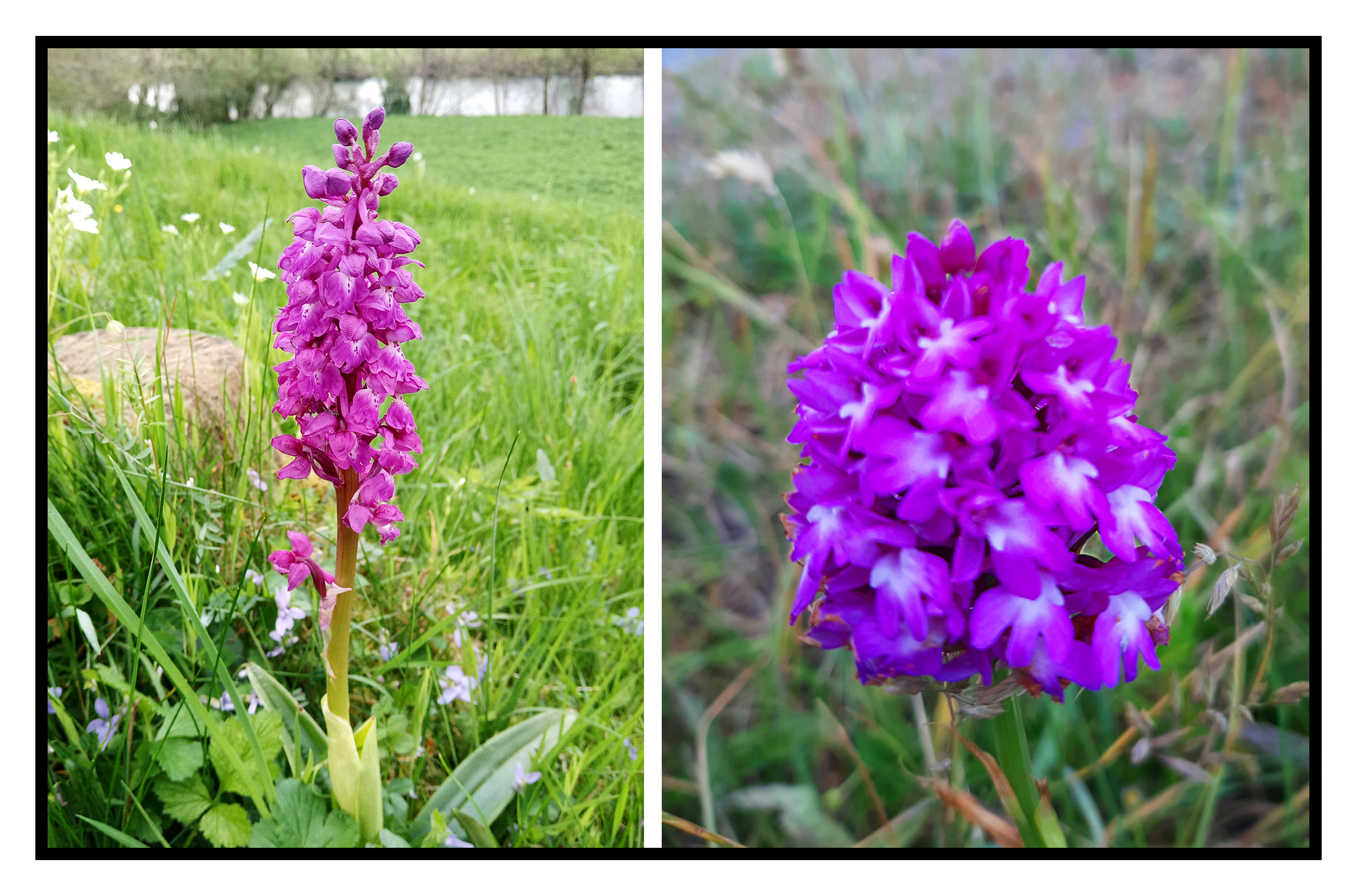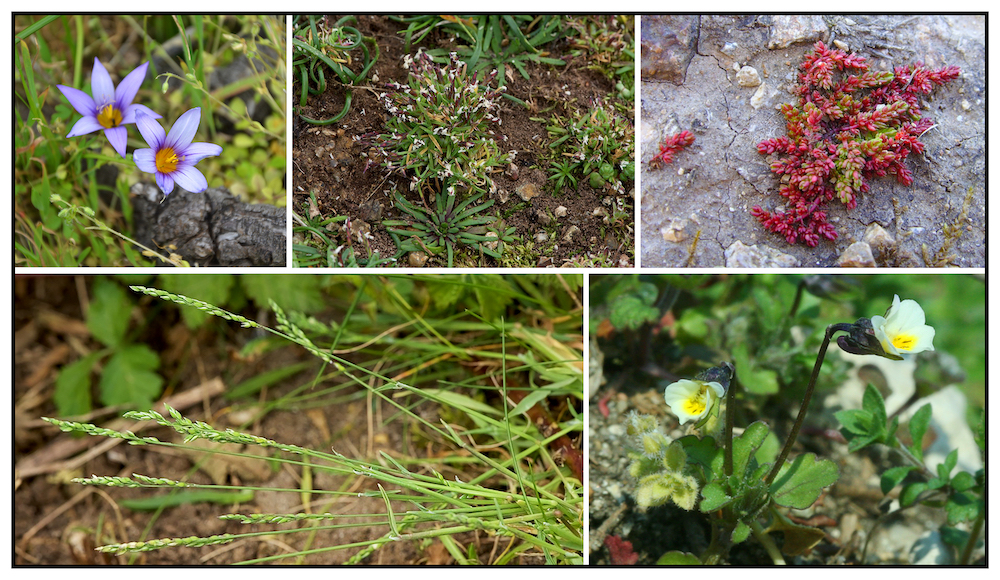


Helen Litchfield is the co-Secretary of the Botany Section of La Société Guernesiaise and says "as one of the most southerly points of the British Isles, Guernsey is home to some rare plants not often found elsewhere in the British Isles".
"The worlds most primitive plants, the Quillworts and Adder’s-tongues are found here in Guernsey. Land Quillwort, Isoetes histrix, is found at Fort Hommet and other sites along the west coast. Also at Fort Hommet, both Small and Least Adder’s-tongues, Ophioglossom azoricum and O. lusitanicum, hang on to their last recorded site on the island. It is somewhat ironic that we have more herbarium specimens, dating back to the late 1700’s of these very rare plants than actually exist now!
"Fort Hommet is a Site of Special Significance ( SSS ) and is home to several rare species. Soon to appear will be Early-purple Orchids, Orchis mascula, tucked behind the bank in the lower car park. Much later in the year, Pyramidal Orchids, Anacamptis pyramidalis, will pop up along the roadside banks. It is also home to a rare Vetch and several rare grass species."

Pictured: (l) Early-purple Orchid (credit: Patrice Bon) and (r) Pyramidal Orchid (credit: Helen Litchfield).
"We have ferns that are almost unique to Guernsey. Look for them in our hedge banks in the south of the island. We have oodles of Lanceolate Spleenwort (Asplenium obovatum ssp. billotii), nationally rare in its own right but when it hybridises with Hart’s Tongue (Asplenium scolopendrium), the delightful Guernsey Spleenwort Asplenium x microdon, appears. The botany section of La Société Guernesiaise have counted 22 of these plants this year. Elsewhere, it has been found once in Brittany and once in Cornwall.
"Staying with ferns, when Lanceolate crosses with Black Spleenwort, Guernsey Fern (Asplenium x sarniense), appears. Much more difficult to identify, we were delighted that Fred Rumsey, former president of the Fern Society and keeper of the Natural History Museum Herbarium chose to visit us last year. Fred identified several of these plants and those in the Ruette des Gains were flagged. The flags are still in place so do go and have a look. Our thanks go to the landowner for protecting these very rare species, only found in Guernsey.

Pictured: (l-r) Quillwort (credit: Charles David), Small Adder's-tongue (credit: Wolffia)and Least Adder's-tongue (credit: Charles David).
Of the flowering plants, my favourite, Dwarf Pansy, Viola kitaibelliana, grows along our south coast cliffs. In flower now, the tiny flowers nod their heads against the wind and are not easy to spot. Considered a native plant, Guernsey, Jersey and the Scilly Isles are the furthest north that it has ventured so far. Formerly abundant all around the coast, habitat loss is resulting in its decline. Grow Guernsey Natives have propagated seed so we will not lose the species altogether. However, we would prefer to see it proliferating in its natural habitat.
Less showy are our grasses. The world’s smallest grass, Early Sand-grass, Mibora minima, is flowering alongside the Dwarf Pansy. Just going over, this plant is a rare coastal plant.
Only ever recorded in Guernsey is the Early Millet sub species sarniensis, Milium vernale ssp. sarniensis. This is now only found on the mound at Pembroke. Some years there are just a very few plants, some years many more. It would appear that it only grows here in the whole of the world! The mound and its surroundings are host to several rare and enchanting species. In Spring, look out for Mossy Stonecrop, Crassula tillaea. Its creeping red ‘fingers’ sprawl along the soil. Sand Crocus, Romulae columnae, will be appearing soon. Not confined to the mound, it can be seen all around the coast. Very common in Guernsey and the other Channel Islands, but very rare in the rest of the British Islands."

Pictured: Top left: Sand Crocus (credit: Amada44). Top centre: Early Sand-grass (credit: Anne Woodington). Top right: Mossy Stonecrop (credit: Helen Litchfield). Bottom left: Dwarf Millet (credit Anne Woodington). Bottom right: Dwarf Pansy (credit: Vojtěch Zavadil).
"But enough of the rarities, some of our common plants are looking at their best in Spring. Speedwells abound, such as the Common Field Speedwell, Veronica persica. Fourteen different species have been recorded in Guernsey. Their tiny blue flowers pop out of banks and grassland everywhere.
"Other blue dots belong to the native Forget-me-nots. Flowering now is the Early Forget-me-not, Myosotis ramoissisima, dotted all along our cliffs and headlands.
"Common everywhere, and getting commoner is Danish Scurvy-grass, Cochlearia danica. A member of Brassicaceae family this plant appears early in the year. Apparently, it gets its name as it contains Vitamin C and was eaten in the winter months to ward off scurvy."

Pictured: Left: Common Field Speedwell (credit:Pam Turner). Centre: Early Forget-me-not (credit: Helen Litchfield). Right: Danish Scurvygrass (credit: Helen Litchfield).
"La Société Guernesiaise has a very active botany section. Our Facebook page is regularly updated to showcase topical plants. Public walks, open to all, are held usually on the first Saturday of each month, though there are changes this year as we try different dates and times. We go out every week all through the year to record different areas and welcome the opportunity to survey new areas. We can be contacted at botany@societe.org.gg.
"For those of you with an interest in our Island’s flora and who would like to learn more, why not join La Société Guernesiaise and its Botany Section. La Société Guernesiaise is a gem of an organisation, dedicated to Guernsey’s natural world and heritage. Annual membership is very reasonable, ranging from just £5 for a student to £34 for a family. It has 9 different sections, and you can join as many as you like, some free and some with a small additional fee. Alternatively, if you are looking for a unique gift why not consider a La Société membership. For further details please see: societe.org.gg."
Pictured top: Left: Lanceolate Spleenwort (credit: Anne Woodington). Bottom left: Guernsey Fern (credit: Aaron Yeandle). Right: Guernsey Spleenwort (credit: Helen Litchfield).